514th Flight Test Squadron
| 514th Flight Test Squadron | |
|---|---|
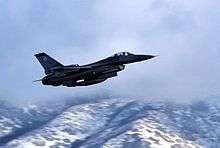 A 514th Flight Test Squadron F-16 Fighting Falcon takes off from Hill Air Force Base Dec. 15 2010 | |
| Active | 1942–1946; 1947–1951; 1951–1965 1970–present |
| Country |
|
| Branch |
|
| Role | Flight Testing |
| Part of | Air Force Materiel Command |
| Garrison/HQ | Hill Air Force Base, Utah |
| Motto(s) |
Quaerite Optimum Latin Seek the Optimum[1] Go, We Pave the Way (1957-1965)[2] |
| Engagements |
World War II Korean War |
| Decorations |
Distinguished Unit Citation Air Force Outstanding Unit Award |
| Insignia | |
| 514th Flight Test Squadron emblem (approved 18 April 1990)[1] |
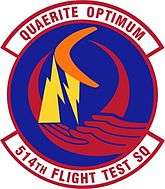 |
| Patch with 514th Bombardment Squadron emblem (approved 26 March 57)[2] |
 |
| 514th Bombardment Squadron emblem (World War II)[3] |
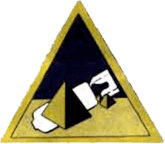 |
| Aircraft flown | |
| Fighter | F-16 Fighting Falcon |
| Transport | C-130 Hercules |
The 514th Flight Test Squadron (514 FLTS) is a United States Air Force squadron. It is assigned to the Ogden Air Logistics Center (OO-ALC), Air Force Materiel Command, stationed at Hill Air Force Base, Utah.
Overview
The 514th FLTS' current mission is to accomplish high-risk acceptance flights on F-16 Fighting Falcon, A-10 Thunderbolt II and C-130 Hercules aircraft following depot level maintenance. 514th FLTS aircrews provide the final quality control checks to ensure aircraft are airworthy and capable of returning to combat units. As the OO-ALC Center Test Authority, the 514th FLTS is the focal point for managing and providing test process expertise and support for all test and evaluation at the OO-ALC.
History
World War II
Established in the Middle East during late 1942 to aid British Forces during the Western Desert Campaign. Initially equipped with obsolete B-17C/D Flying Fortresses transferred from Tenth Air Force. Replaced with B-24 Liberators flown from Florida via South America; over to then across Central Africa then north to Egypt in early 1943. Became part of United States Middle East Air Forces (USMEAF), later Ninth Air Force.[1]
Operating from bases in BritishPalestine, Egypt, Libya and Tunisia, attacked shipping in the Mediterranean and harbor installations in Libya, Tunisia, Sicily, and Italy to cut enemy supply lines to North Africa. Struck airdromes, marshalling yards, and other objectives in Sicily and Italy after the fall of Tunisia in May 1943. Reassigned to Fifteenth Air Force in late 1943, and moved to southern Italy. Squadron flew long range strategic bombardment missions to targets in Italy, France, Germany, Czechoslovakia, Austria, Hungary, and the Balkans to bomb factories, marshalling yards, oil refineries, oil storage facilities, airdromes, bridges, harbors, and other objectives.
After the German Capitulation in May 1945, returned to the United States; was re-equipped with B-29 Superfortress bombers and trained under Second Air Force for deployment to the Pacific Theater. However, with the Japanese Capitulation in August, the training ended and most personnel demobilized by the end of October. Remained in active status but not fully manned or equipped, and subsequently inactivated in early 1946 due to budget restrictions. The squadron was not fully manned or equipped between 10 November 1945 and 26 March 1946 and was unmanned from, 23 May 1947 – 20 September 1948.[4][5]
Cold War

Based in Japan at the beginning of the Korean War, the squadron, flying RB/WB-29s, performed daily strategic weather reconnaissance missions over the combat zone, conducted shipping surveillance and visual reconnaissance, and accomplished electronic countermeasures reconnaissance until 20 February 1951. In the early days of the conflict, the squadron also dropped leaflets. Initially unarmed, and later only lightly armed with two .50-caliber machine guns in the tail turret, the WB-29s flew daily missions over enemy-held territory. During 27 June through 27 December 1950, the squadron flew over 200 combat missions, making over 5,000 vitally needed weather observations. These missions were exceptionally hazardous because of extremely varying weather conditions and exposure to attack over enemy territory.[6]
Reactivated in May 1951. Practiced electronic countermeasures with B-29 aircraft from c. 1952 until conversion to B-47 Stratojet jet medium bombers in 1954. Between 1954 and 1965, flew a long series of simulated combat bombardment missions to maintain readiness as a unit of the Strategic Air Command, testing electronic warfare devices and radar techniques, using B-47 and EB-47 aircraft. Inactivated in 1965 with the retirement of the B-47.[6]
Flight testing
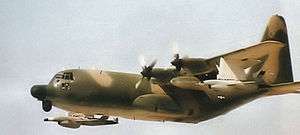
Reactivated in 1970 as the 6514th Test Squadron at Edwards AFB, California. Mission was to support flight testing and modifications of the Ryan AQM-34Q Firebee reconnaissance drone, being used in the Vietnam War by the 556th Reconnaissance Squadron to gather intelligence over strongly defended areas over North Vietnam.. Moved to Hill AFB, Utah in 1973 and became a geographically-separated component of the Air Force Flight Test Center (AFFTC).[7]
At Hill, the squadron continued conducting and supporting the Firebee as well as other RPV, UAV, and cruise missile test missions, and supported various test operations at the Utah Test and Training Range (UTTR). From the late 1970s, the 6514th operated a DC-130H Hercules (later, NC-130H) drone launch/control airplane along with an HC-130H. Added two C-130B (later, NC-130B) and a DC-130A in the 1980s. The squadron also used a few HH-53C and CH-3E helicopters which were used to retrieve drones and missiles and transport people to and from remote sites on the range. By the mid-1980s, the heavy helicopters gave way to HH-1H helicopters.[7]
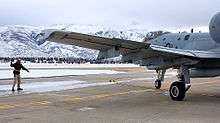
The 6514th Test Squadron was renumbered as the 514 FLTS on 2 Oct 1992 during the Air Force's downsizing and reorganization as all 4-digit squadrons were reassigned a 3-digit number from Air Force heritage. Absorbed the AFRES 15th Flight Test Squadron in 1993 and began depot flight testing C-130, A-10 and F-16 aircraft. Completed the AFFTC drone and range mission and realigned under Ogden ALC on 30 September 1995.[7]
Currently, the 514th quality-control checks involve performing flight checks, which means strapping themselves into planes that have usually been stripped to the bone and put back together again. The checklists for the check flights vary depending on the plane, model and maintenance or upgrades completed at the depot. According to the pilots and crew members, the standard check flight for an F-16 can take up to an hour, while the A-10 and C-130 flights can last for an hour and a half.
Once the Ogden ALC Maintenance Directorate is finished with a plane, it does a series of ground checks before handing it over to the 514th, who then perform their own set of ground checks before sending the pilots and crew down the runway. In addition, the 514th provides delivery of foreign military sales aircraft all over the world, from Thailand to Italy. Many of those aircraft come from the Aerospace Maintenance and Regeneration Center, or "bone yard," at Davis-Monthan AFB, Ariz., and the 514th sends pilots there to test them once they have been reassembled and put back into flying condition.
Lineage
- 514th Bombardment Squadron
- Constituted as the 514th Bombardment Squadron (Heavy) on 19 October 1942
- Activated on 31 October 1942
- Redesignated 514th Bombardment Squadron, Very Heavy on 23 May 1945
- Inactivated on 7 March 1946
- Redesignated 514th Reconnaissance Squadron, Very Long Range, Weather on 16 September 1947
- Activated on 15 October 1947
- Inactivated on 20 February 1951
- Redesignated 514th Bombardment Squadron, Medium on 25 May 1951
- Activated on 1 June 1951
- Inactivated on 15 March 1965
- Consolidated with the 6514th Test Squadron on 1 October 1992[1]
- 514th Flight Test Squadron
- Designated as the 6514th Test Squadron and activated on 15 May 1970
- Consolidated with the 514th Bombardment Squadron on 1 October 1992
- Redesignated 514th Test Squadron on 2 October 1992
- Organized on 1 July 1993
- Redesignated 514th Flight Test Squadron on 1 March 1994[1]
Assignments
- 376th Bombardment Group, 31 October 1942
- 498th Bombardment Group, 10 November 1945 - 26 March 1946
- 43d Weather Wing, 15 October 1947[note 1]
- 43d Weather Wing (later 2143d Air Weather Wing), 1 June 1948 - 20 February 1951
- 376th Bombardment Group, 1 June 1951 (attached to 376th Bombardment Wing)
- 376th Bombardment Wing, 16 June 1952 – 15 March 1965
- 6512th Test Group (later, 6510th Test Wing), 15 May 1970
- Air Force Flight Test Center, 1 January 1973
- 6510th Test Wing, 1 March 1978
- 6545th Test Group (later 545th Test Group), 1 January 1979
- Ogden Air Logistics Center (later Ogden Air Logistics Complex), 30 September 1995 – present[1]
Stations
- RAF Lydda, Palestine, 31 October 1942
- RAF Abu Sueir, Egypt, 8 November 1942
- RAF Gambut (Kambut), Libya, 10 February 1943
- Soluch Airfield, Libya, 25 February 1943
- Benina Airport, Benghazi, Libya, 16 April 1943
- Enfidaville Airfield, Tunisia, c. 26 September 1943
- Detachment operated from Benina Airport, Libya, 3–11 October 1943
- San Pancrazio Airfield, Italy, 19 November 1943 – 19 April 1945
- Harvard Army Air Field, Nebraska, 8 May 1945
- Grand Island Army Air Field, Nebraska, 25 June 1945
- March Field, California, 10 November 1945
- MacDill Field, Florida, 22 December 1945 - 7 March 1946
- North Field, Guam, 15 October 1947 – 20 February 1951
- Forbes Air Force Base, Kansas, 1 June 1951
- Barksdale Air Force Base, Louisiana, 10 October 1951
- Lockbourne Air Force Base, Ohio, 1 December 1957 – 15 March 1965
- Edwards Air Force Base, California, 15 May 1970
- Hill Air Force Base, Utah, 18 September 1973 – present[1]
Aircraft
- Boeing B-17 Flying Fortress, 1942
- Consolidated B-24 Liberator, 1942–1945
- B-29 Superfortress, 1945, 1947-1951, 1951–1954
- TB-29 Superfortress, 1947–1951
- RB-29 Superfortress, 1947–1951
- WB-29 Superfortress, 1947–1951
- Douglas C-54 Skymaster, 1948–1951
- Douglas C-47 Skytrain, 1949–1950
- Boeing B-47 Stratojet, 1954–1961
- E-47 (later EB-47 Stratojet), 1961-1965[1]
- Ryan AQM-34Q (Drone), 1970-1995
- Lockheed DC-130 Hercules, 1970-1995
- Lockheed NC-130H Hercules, 1970-1995
- BGM-109G Ground Launched Cruise Missile, 1979-1990
- Fairchild Republic A-10 Thunderbolt II, 1993–present
- Lockheed C-130 Hercules, 1993–present
- General Dynamics F-16 Fighting Falcon, 1993–present
See also
References
- Notes
- ↑ This was a table of organization unit, organized in September 1945 and inactivated on 3 June 1948. It was replaced by a table of distribution wing organized on 1 June 1948. In October 1948 the table of distribution wing was renumbered to conform with Air Force policy that such units (later called MAJCON units) be numbered in 4-digit series allotted to the Major Commands.
- Citations
- 1 2 3 4 5 6 7 8 "Factsheet 514 Flight Test Squadron". Air Force Historical Research Agency. April 8, 2008. Retrieved November 29, 2016.
- 1 2 Maurer, Combat Squadrons, pp. 619-620
- ↑ Watkins, pp. 90-91
- ↑ Robertson, Patsy (October 9, 2009). "Factsheet 512 Rescue Squadron (AETC)". Air Force Historical Research Agency. Retrieved November 30, 2016.
- ↑ "Factsheet 512th Rescue Squadron". Air Education and Training Command. December 31, 2013. Archived from the original on 17 December 2014. Retrieved November 30, 2016.
- 1 2 Lloyd,
- 1 2 3 Rogers,
Bibliography
![]()
- Lloyd, Alwyn T. (2000), A Cold War Legacy: A Tribute to Strategic Air Command, 1946-1992, Pictorial Histories Publishing Co.; 1st edition, ISBN 1575100525
- Maurer, Maurer, ed. (1983) [1961]. Air Force Combat Units of World War II (PDF) (reprint ed.). Washington, DC: Office of Air Force History. ISBN 0-912799-02-1. LCCN 61060979.
- Maurer, Maurer, ed. (1982) [1969]. Combat Squadrons of the Air Force, World War II (PDF) (reprint ed.). Washington, DC: Office of Air Force History. ISBN 0-405-12194-6. LCCN 70605402. OCLC 72556.
- Watkins, Robert A. (2009). Insignia and Aircraft Markings of the U.S. Army Air Force In World War II. Volume IV, European-African-Middle Eastern Theater of Operations. Atglen,PA: Shiffer Publishing, Ltd. ISBN 978-0-7643-3401-6.
- Rogers, Brian. United States Air Force Unit Designations since 1978. Hinkley, England: Midland Publications, 2005. ISBN 1-85780-197-0.

